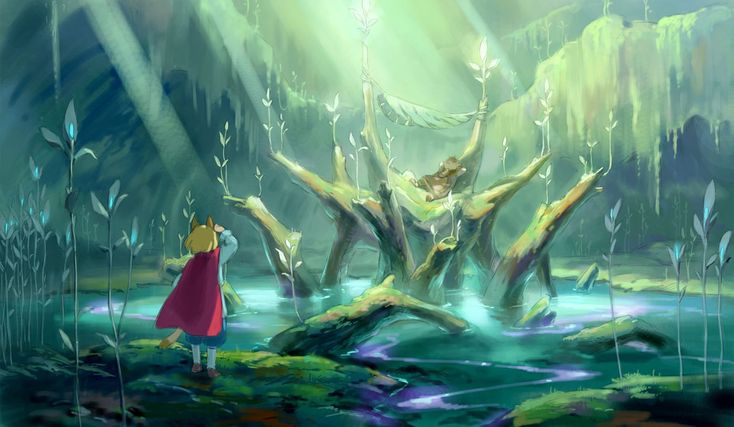Introduction
Studio Ghibli’s films – Spirited Away, My Neighbor Totoro, Howl’s Moving Castle – are celebrated for their breathtaking, hand-painted aesthetic. The Ghibli art style blends whimsical landscapes, soft watercolor textures, and emotionally expressive characters, creating a dreamlike world.
But how can you learn this style? And can AI tools like Grok help? In this guide, we’ll cover:
✔ What defines Ghibli-style art?
✔ Key techniques to replicate it
✔ Free & paid resources for learning
✔ How AI (like Grok) can assist in Ghibli-style art creation

What Makes Ghibli-Style Art Unique?
Studio Ghibli’s art stands out due to:
1. Painterly, Handcrafted Backgrounds
- Resembles traditional watercolor and gouache techniques.
- Uses soft gradients and organic textures (e.g., clouds, forests).
- Example: The lush landscapes in Princess Mononoke.
2. Expressive, Simple Character Designs
- Round faces, large eyes, and subtle emotions (e.g., Chihiro from Spirited Away).
- Avoids overly complex details—focuses on movement and personality.
3. Nature & Nostalgia Themes
- Recurring motifs: rustic villages, flying machines, and magical creatures.
- Color palettes are warm, muted, and earthy (not overly saturated).
4. Dynamic Lighting & Atmosphere
- Diffused sunlight, glowing lanterns, and misty horizons create mood.
- Example: The floating lights in Howl’s Moving Castle.
How Ghibli’s Art Style Evolved Over Time
| Film | Artistic Innovation |
|---|---|
| Nausicaä of the Valley of the Wind (1984) | Early use of detailed mechanical designs and post-apocalyptic landscapes |
| My Neighbor Totoro (1988) | Established the whimsical, nature-centric style |
| Princess Mononoke (1997) | Darker tones with complex ecological themes |
| Spirited Away (2001) | Peak fantasy world-building and painterly textures |
| The Wind Rises (2013) | Realistic aircraft designs blended with Ghibli’s soft aesthetics |

How to Draw in Ghibli Style (Step-by-Step Guide)
Step 1: Study Ghibli’s Composition
- Watch films and analyze background layouts.
- Notice how foreground, midground, and background layers interact.
Step 2: Sketch with Organic, Flowing Lines
- Avoid rigid shapes—use loose, curved strokes.
- Characters should feel light and dynamic.
Step 3: Use a Soft, Earthy Color Palette
- Ghibli films avoid neon colors. Instead, use:
- Muted greens (forests)
- Warm browns & yellows (villages)
- Pastel blues (skies)
Step 4: Add Texture with Watercolor or Digital Brushes
- Traditional method: Watercolor washes + fine ink lines.
- Digital method: Use Procreate/Photoshop brushes that mimic paint.
Step 5: Focus on Emotion & Movement
- Characters should express feelings subtly (e.g., a slight frown, relaxed posture).
- Backgrounds should feel alive (swaying grass, drifting clouds).
Can AI Like Grok Help Create Ghibli-Style Art?
With the rise of AI art generators, tools like Grok AI (by xAI) can assist in:
1. Generating Ghibli-Inspired Concept Art
- Use prompts like:
- “Whimsical anime landscape with a cozy cottage, soft watercolor style, Studio Ghibli aesthetic”
- “Cute forest spirit character, Miyazaki-inspired, painterly textures”
2. Color Palette Suggestions
- AI can analyze Ghibli films and recommend harmonious color schemes.
3. AI-Assisted Sketching
- Tools like Krita’s AI-assisted brushes or Grok-powered plugins can help refine line art.
⚠ Limitation: AI can’t fully replicate Ghibli’s handmade charm, but it’s useful for inspiration & drafts.
Top 5 Free Resources for Learning Ghibli-Style Art
- Studio Ghibli Art Books (Free PDFs Online) – Breakdowns of film artwork.
- YouTube Tutorials – “Draw Ghibli Landscapes in Procreate” (Winged Canvas).
- Ghibli-Inspired Brushes (Brusheezy, DeviantArt) – Free Photoshop/Procreate packs.
- Pixiv & ArtStation – Fan-made Ghibli-style artworks for study.
- Ghibli Color Palettes (Coolors.co) – Pre-made Studio Ghibli color schemes.
Top 5 Paid Resources
- Domestika Course: Whimsical Landscape Painting – Step-by-step Ghibli environments.
- Skillshare Class: Digital Painting Like Studio Ghibli – Full workflow guide.
- Official Art Books (e.g., The Art of Spirited Away) – High-quality references.
- Procreate Ghibli Brush Set ($10-20) – Mimics Miyazaki’s textures.
- Gumroad Tutorials – Professional artists sell in-depth guides.
The Cultural Impact of Ghibli’s Art Style
- Inspired indie games (Ni no Kuni, Gris)
- Influenced Western animation (Over the Garden Wall, Cartoon Saloon films)
- Exhibitions worldwide (e.g., Studio Ghibli Museum in Mitaka)
Common Misconceptions About Ghibli-Style Art
- “It’s just anime” → Ghibli’s style is closer to European illustration (e.g., Moebius) than mainstream anime.
- “Everything is hand-drawn” → While mostly traditional, later films like The Tale of The Princess Kaguya used digital tools.
- “It’s only for children” → Themes often address war, environmentalism, and adulthood.
Conclusion
Ghibli-style art remains unique for its handcrafted warmth, emotional resonance, and reverence for nature. Whether through its painterly backgrounds or subtly expressive characters, Studio Ghibli’s aesthetic continues to captivate audiences globally.
